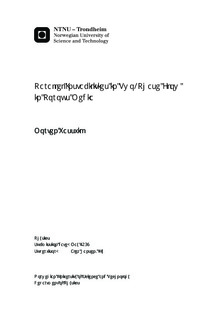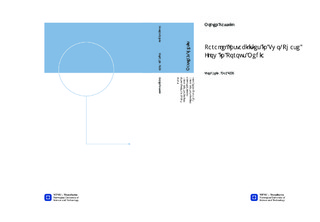| dc.description.abstract | Two immiscible fluids flowing in parallel with respect to the interface separating them in a two-dimensional porous medium has been studied using a dynamic network model. Two immiscible fluids, one wetting and the other non-wetting moving in parallel is a complicated process that haven't gotten much attention. It is found that there is a competition between imbibition and drainage displacements at the pore-scale along the front separating the two fluids due to an external force driving both the fluids in the direction parallel to this front. Imbibition is the process where a wetting fluid displaces a non-wetting fluid, while drainage is when a non-wetting fluid displaces a wetting fluid. When an external force driving the system in the direction parallel to the front separating the two liquid is small, such that the capillary forces are much strong that viscous forces, we find that imbibition displacements will dominate along the front. The wetting fluid is found to displace the non-wetting such that the front separating the non-wetting fluid from the wetting fluid moves with a velocity proportional to the volumetric flow rate perpendicular to the imposed flow direction. A wetting fluid will prefer to displace a non-wetting fluid along narrow channels due to the fact that capillary forces provide suction in imbibition, as opposed to resistance in drainage. When the front is moving, we find that clusters of non-wetting fluids are left behind the front, concentrated in the widest part of the network. These cluster will not be able to be move as long as the external driving force is not large enough to overcome the the capillary forces holding back the cluster. Wetting fluid will flow in the space around the clusters.If the external driving force is large enough so that these clusters can be mobilized, then we'll have viscous forces start dominating, and there will be a mixture of imbibition and drainage depending on the local geometry and boundary conditions. If drainage starts dominating the front will stop moving and become unstable, and non-wetting fingers will start moving in the direction of the wetting liquid. If the driving force is strong enough, these fingers will break up into bubbles due to crossing wetting fluids, and non-wetting bubbles will start migrating into the wetting fluid.For special case of a band of non-wetting fluid surrounded by wetting fluid on both sides, we find that the wetting fluid will try to displace the non-wetting fluid from both sides simultaneously. If the external driving force is not strong enough so that the clusters broken off from either side can be mobilized, we find that both the fronts stabilize and stop moving. The non-wetting and wetting fluid will then flow by themselves as if they were part of its own effective network separated by the fluid-fluid front, without any influence from the other fluid. The two fronts will be stationary as long as the capillary forces are dominating over viscous forces. | nb_NO |

